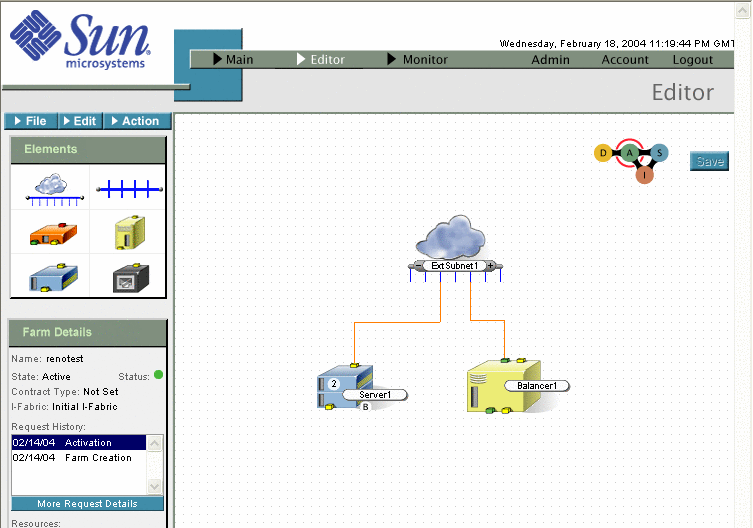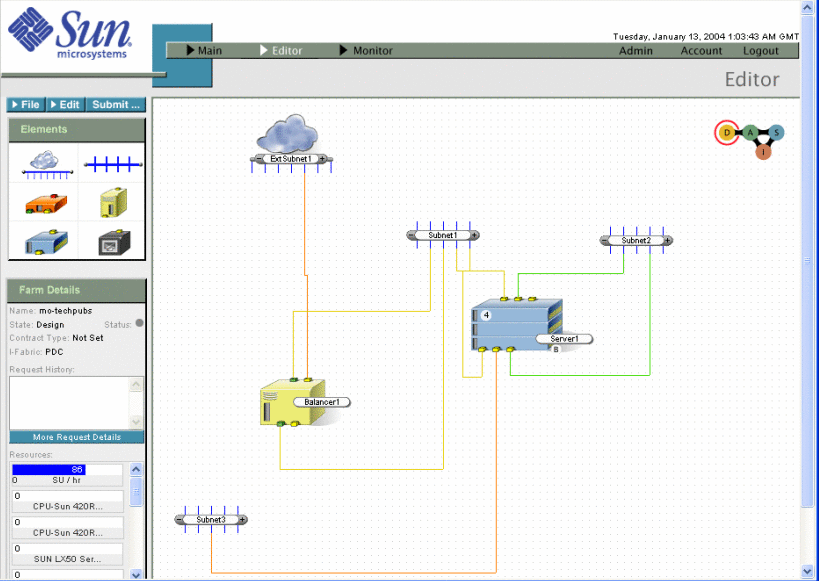Configuring the Load Balancer
The Load Balancer element has the following ports:
-
One management port for each primary port on the device
-
16 Virtual IPs (VIPs) for each primary port
There is no restriction on the number of subnets that you may use for VIPs. Subnets may reside on any VLAN. Similarly, the management interfaces may be connected to any subnet on any VLAN. Servers attached to the management subnets on either or both management ports are balanced. Allocate IPs on a subnet by connecting the VIP to the Subnet element. Set the number of IPs by adding VIPs in the Configure Load Balancer dialog box.
Note –
If you are balancing servers that run a Linux operating system that does not support VLANs, all subnets must reside on the same VLAN.
This section describes the following types of Load Balancer configurations.
-
Path Failover, see How To Configure a Load Balancer in Path Failover Mode
-
Device Failover or High Availability (HA), see How To Configure the Load Balancer
-
Single Device (non-HA), see How To Configure the Load Balancer
Single load balancer device configuration (non-HA) is provided by the standard replacefaileddevice request mechanism. See Troubleshooting Farm Device Failure in N1 Provisioning Server 3.1, Blades Edition, System Administration Guide and Responding to Farm Device Failure in N1 Provisioning Server 3.1, Blades Edition, System Administration Guide for a description of replacefaileddevice request.
The following graphic illustrates a single device load balancer configuration.
Figure 4–1 Farm with Single Load Balancer Device

To enable path failover, connect both management interfaces (green ports) to the same subnet. If one interface fails, paths on the failed interface will be restored on the live interface. The following graphic illustrates a server farm configured for path-failover load balancing.
Figure 4–2 Farm with Path-Failover Load Balancing

By default, the Server element has one interface for each primary port, corresponding to the primary interface for that port. The primary interfaces have DNS names. To set the native VLAN of the physical interfaces, place the primary interfaces on the same VLAN. Primary interfaces cannot be removed, and their primary port cannot be changed. DNS names appear only for primary interfaces. IP addresses appear for all interfaces when they are assigned.
HA Configuration
If the load balancer you selected is in a high availability (HA) configuration, the element in the farm view area displays an HA.
To enable device failover or high availability, configure a standby-active pair of load balancer devices. You may add and remove virtual interfaces from within the Configure Server dialog box. See How To Configure the Load Balancer and How To Configure Virtual Interfaces for procedural information.
- © 2010, Oracle Corporation and/or its affiliates
